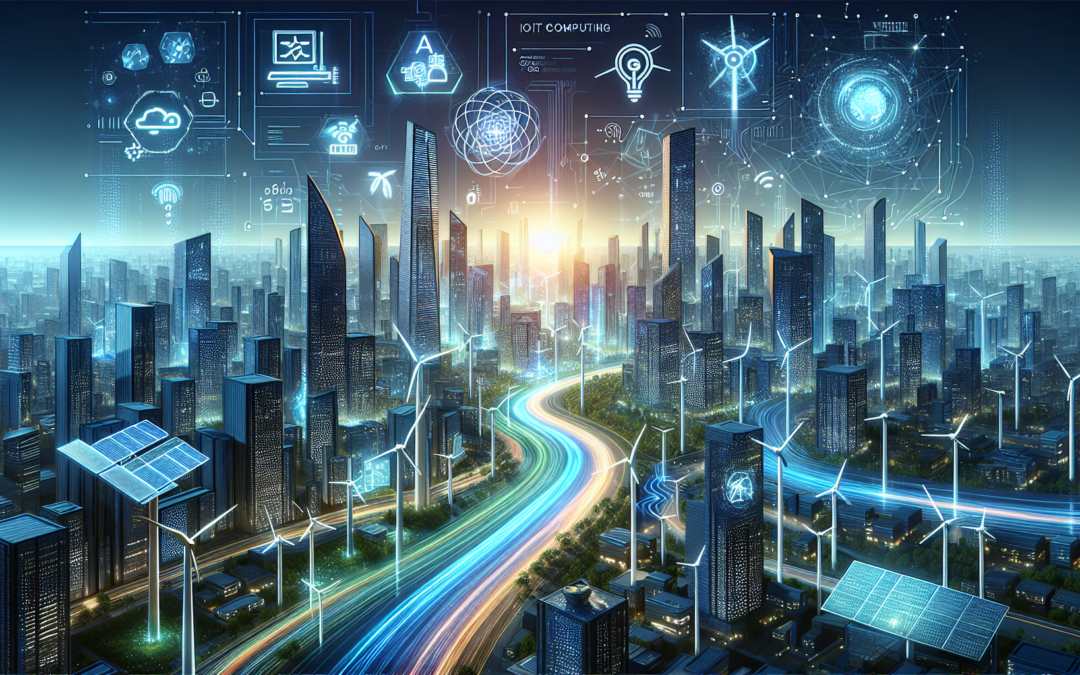Introduction
In an era where sustainability and efficiency are more crucial than ever, the intersection of digital computing technology and clean energy stands as a beacon of innovation. Deployments in the field of IT infrastructure are accelerating the adoption and advancement of clean energy technologies. With a decade of digital computing advancements, we’re at the cusp of a new energy paradigm.
Read more about the original news article here.
Digital Computing: A Catalyst for Clean Energy
The growth of digital technology, especially over the last decade, has played a significant role in the clean energy sector. The following advancements underscore the synergy between digital computing and sustainable energy solutions:
- Advanced Analytics and AI: The integration of advanced analytics and artificial intelligence (AI) into energy systems has facilitated more efficient energy usage and storage solutions.
- IoT Devices: Internet of Things (IoT) devices have revolutionized energy management by enabling real-time monitoring and optimization.
- Cloud Computing: Cloud platforms offer scalable and flexible infrastructure for the deployment of clean energy projects by providing enhanced computational power and storage capabilities.
Enhanced Grid Management
The digital transformation has empowered grid operators with enhanced tools for monitoring and managing energy resources. Advanced grid management systems equipped with AI optimize energy flows, anticipate demand spikes, and mitigate potential outages. This leads to a more resilient and reliable energy infrastructure.
IT Infrastructure’s Role in Clean Energy
The backbone of modern clean energy solutions is robust IT infrastructure. It provides the necessary support for seamless integration and operation of clean technologies. Here’s how:
- Data Centers: Efficient data centers manage vast amounts of data generated by smart grids and IoT devices, ensuring that energy usage is optimized and sustainable practices are upheld.
- Networking Security: Secure networks safeguard the integrity of energy systems, protecting against cyber threats that could disrupt supply and compromise sensitive information.
- Edge Computing: By processing data closer to where it is generated, edge computing reduces latency and enhances the reliability of real-time applications in energy management.
Scalability and Flexibility
Modern IT infrastructure offers the scalability and flexibility necessary for expanding clean energy projects. As demand grows or new technologies emerge, scalable IT solutions can quickly adapt without requiring significant overhauls, making it easier to integrate renewable energy sources into existing grids.
Ensuring IT Security in Clean Energy
Security is paramount in the clean energy landscape. The integration of IT systems into energy grids introduces new vulnerabilities that must be addressed to ensure the continuous and safe operation of energy systems.
- Cybersecurity Frameworks: Implementing robust cybersecurity frameworks is essential to protect against potential breaches and ensure the resilience of energy networks.
- Encryption Techniques: Using advanced encryption techniques ensures that sensitive data is protected during transmission and storage.
- Regular Security Audits: Conducting regular security audits helps identify vulnerabilities and areas for improvement, keeping the IT systems secure and up-to-date.
Building a Resilient Future
By prioritizing IT security, energy providers can ensure that their systems remain robust and reliable. This not only protects against potential threats but also builds trust with consumers and stakeholders, promoting greater adoption of clean energy technologies.
Conclusion
The last decade has witnessed transformative advancements in digital computing technology that have significantly bolstered the clean energy sector. From enhanced grid management to robust IT infrastructure and fortified cybersecurity measures, the synergy between IT and clean energy is undeniable. As we continue to innovate and integrate these technologies, we pave the way for a sustainable, efficient, and resilient energy future. By leveraging these digital advancements, we can accelerate the transition to a cleaner and more sustainable world.
For more on this topic, you can read the original article here.
